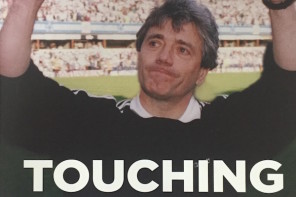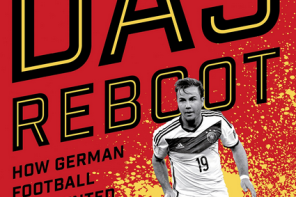In May, my parents will have been married for 36 years. I visited them recently and it was nice to see just how blissfully content they are with each other. My mother spoke about downsizing after retirement while my father nodded happily. I listened and left the following day feeling certain that these two are for keeps.
It was a contrast to how they could be sometimes while I was growing up. Christ, there were some fierce arguments back then, often resulting in my dad storming out of the room and refusing to eat dinner with the rest of our family. Sometimes his standoff would last for days.
More than once, I watched these disputes and felt certain that my parents were heading for divorce. Perhaps strangely, I felt at ease with it, the only aspect of their potential separation that really troubled me was how it might cast my childhood in a different, darker light. Suddenly I might discover that they had not spoken to each other during the entirety of my 11th birthday party, or that the belting trip we took to Orlando in 1995 was almost cancelled because my mum couldn’t stand the thought of being stuck on a plane with my dad for the best part of eight hours. Or even that there had been another man, or woman, or both.
So what, you may be asking, has any of this got to do with ‘Men In White Suits’, the new book by journalist and author, Simon Hughes? Well, personally, quite a lot. Because while reading the accounts of players and managers who represented Liverpool Football Club in the 1990s, I couldn’t help but feel a sense of a childhood façade creaking and cracking until all that was left was a grim truth – that the decade in which I firmly fell in love with Liverpool, watching the club’s exploits with wide-eyed wonder, had been one in which it was at war with itself to a painfully destructive degree. There had been more in-fighting than I, and perhaps anyone, first realised, until the ultimate divorce happened – Liverpool and glory went their separate ways.
To a large extent, that story is known. Liverpool were phenomenally successful for over two decades, winning trophy after trophy from the mid-sixties through to the late-eighties before the wheels came off in the nineties. There were three new managers in the decade, one more than the pieces of silverware the club won during the same period, and by the time the noughties were upon us there was no doubt Bill Shankly’s “bastion of invincibility” had ceased to exist.
What ‘Men In White Suits’ does is fill in the details and present a thorough and wholly personalised account of this chunk in Liverpool’s history, arguably more so than any other previous book or broadcast. It also follows directly on from Hughes’ much-acclaimed ‘Red Machine’, which told the inside story of Liverpool during the 1980s. The format is identical, with the author using interviews with 11 figures from the era to form 11 separate chapters. It is a simple way to detail a messy, fraught and ultimately complicated story of decline.
The selection of interviewees is key and as was the case with ‘Red Machine’, Hughes chose people who were varied enough to present a wide-ranging account of the era and sufficiently detached from Liverpool as to be able to speak candidly. This, for instance, is why Robbie Fowler, the club’s best player of the nineties, was not approached and John Scales, who was part of the first team for less than two years, was. Fowler works as an ambassador for Liverpool while Scales, as we discover at the start of his chapter, spends his days smoking cigarettes and drinking espressos on Wimbledon High Street.
Alongside Scales, Hughes also spoke to Jan Molby, Nick Tanner, Ronny Rosenthal, Jamie Redknapp, Jason McAteer, Patrick Berger, David Thompson, Erik Meijer, Graeme Souness and Roy Evans. Quite frankly, you could not find a more disparate bunch, and Hughes’ genius allows their personal stories to breathe. He presents each account with a crispness of prose and clarity of expression that continues to mark him out as one of the finest writers on all matters LFC.
Men In White Suits illustrates that Liverpool’s fall from grace was as complicated as it was bitter, and far from being the case, as Alex Ferguson will have the world believe, that they were simply knocked off their “fucking perch” by Manchester United. As Jamie Carragher writes in the book’s Foreword, “the comment was accepted as an undisputed fact even though it isn’t really true”.
Nor is it fair to say that Souness is to blame for everything, even if the Scot admits to making crucial mistakes as Liverpool manager following Kenny Dalglish’s shock resignation from the post in February 1991. Instead a host of factors conspired to leave Liverpool, who for over 20 years had been the model of calm and consistency, in a state of bewildered failure.
So anyway, the suits.
The players’ choice of attire ahead of the 1996 FA Cup final against United did not bother me greatly at the time. Yes they were hideous, but even at 15, I’d seen worse, and as Jason McAteer states in his chapter, “they didn’t make us play any better or any worse.” Liverpool lost that game 1-0 because they were the poorer of two poor sides on the day.
After reading the chapters belonging to Redknapp, McAteer and Scales – this book’s actual men in white suits – you develop an appreciation of the clothing’s symbolic importance; that they were the outward representation of a club which internally had lost its way.
This was the era of the Spice Boys, of regular nights out in London, Wash ‘n’ Go ads and a full-on embrace of a celebrity lifestyle. And while Redknapp, McAteer and Scales insist this had little to do with their lack of success on the pitch – and point out that they were a very good team during this time – it becomes clear through their accounts that a shortage of focus had infected Liverpool to a fatal degree, culminating in their decision to ‘go Armani’ ahead of the biggest match of their collective lives.
Each expresses regret over wearing the suits at Wembley yet none of them at the time, nor any of their team-mates or coaches, showed the gumption to put a stop to it. This was full-on empire rot with subsequent bitter fall-out, something Scales, who comes across as a thoughtful and intelligent individual in this book, makes direct reference to when he speaks about taking members of the backroom staff to task over the lack of order and discipline at Liverpool. “I’d had enough of it. I told them things had to change,” he says. “What are we doing? Where are we going?”
The bickering in ‘96 was nothing compared to what was going on at Liverpool at the start of the decade and what we get in Men In White Suits, particularly in the chapters belonging to Molby, Tanner and Souness, is a greater understanding of how the club’s inner turmoil truly took hold at this time. Quite simply, those on the inside were tearing each other apart.
Senior players, such as Molby, were openly questioning the quality of the new recruits, such as Tanner, as well as the attempts by Souness to overhaul their long-held preparation methods. In turn, the manager made little secret of his near-disgust at the “bad attitude” among “ageing pros who did not want to miss out on one final payday”. His reaction was to sell as many as he could as quickly as he could, something which Souness admits to Hughes severely harmed what was a delicate transition process at Anfield. “I should have been far cuter,” Souness says with a deep level of regret that pours continuously out of his contribution, at no point more so than when he recounts his disastrous decision to give an interview to The Sun in 1992.
Souness’ chapter is arguably the most important and revealing in Men In White Suits, and one in which Hughes also shows admirable bravery as a writer, questioning as he does Dalglish’s role in Liverpool’s decline. I know from personal experience that criticising the King can lead to a torrent of abuse from Kopites given his status as the club’s greatest ever player and, arguably, greatest ever figure given the incredible personal sacrifices he made in aftermath of the Hillsborough disaster. But the almost untold story of Liverpool’s decline is the fact it started on Dalglish’s watch, as a great team was allowed to grow old together and very little, if any, succession planning was put in place. As Hughes writes: “In Dalglish’s five and a half years in charge, he signed seven players under the age of 20 that would play for the first team. Of the seven, four left impressions that ranged from reasonable to good. It meant that by the time Souness returned to Anfield, Liverpool’s squad was made up of old players almost past their best and youngsters not ready to represent Liverpool on a regular basis”.
This harks back to the complicated nature of Liverpool’s fall in the nineties: the process actually started in the eighties, under a man suffering from severe mental strain, and at a point when English football was entering the Premier League era, a time of greater wealth, scrutiny and, in the case of United in particular, strong challenges to the status quo. In that regard Liverpool Football Club was caught in a tailspin, suddenly finding that its tried and tested methods, such as not paying huge salaries, maintaining almost archaic training ground methods and believing that players could be trusted to be wholly responsible for their performances, were quickly becoming out of date. Little wonder everyone started rowing.
And when the club finally began to catch up with the modern era under Gerard Houllier’s stewardship in 1999, there was yet more fracture and angst behind the scenes as local loyalists such as McAteer, Thompson and Evans were disposed of so a largely foreign influx could fully take shape at Anfield. It is clear from Men In White Suits that all three have been left feeling hurt and/or bitter by the experience, which in the case of Evans, who had been at Liverpool for 25 years as player, coach and manager, makes for particularly sad reading.
There are lighter moments in this book, but Men In White Suits is a serious study of a mighty institution’s decline. It’s a painful read for someone like myself who grew up watching Liverpool in the nineties and, while being aware that this was a difficult period in the club’s history, had not realised just how ugly life there had become. I was a kid at the time and simply did not know mum and dad fell out this badly.
Men In White Suits is published by Bantam Press and released on Thursday
You can follow Sachin Nakrani on Twitter (@sachinnakrani)
You can follow Simon Hughes on Twitter (@simon_hughes__)






